INDIAN OCEAN TRAVEL by TOURISMER
INDIAN OCEAN TRAVEL by TOURISMER

Responsible travel INDIA
India never leaves indifferent. Majestically exotic, abundant and contrasting, this destination is undoubtedly one of the most bewitching there is. From lush jungles to the effervescence of its cities, passing through its flamboyant royal cities and its fragrant cuisine, the many contrasts that characterize India seduce and confuse its travelers.
We visit the north of the country to get lost in its dazzling landscapes, where sumptuous palaces are devoured by the eyes. In immersion with the locals, you discover the habits and customs of your hosts.
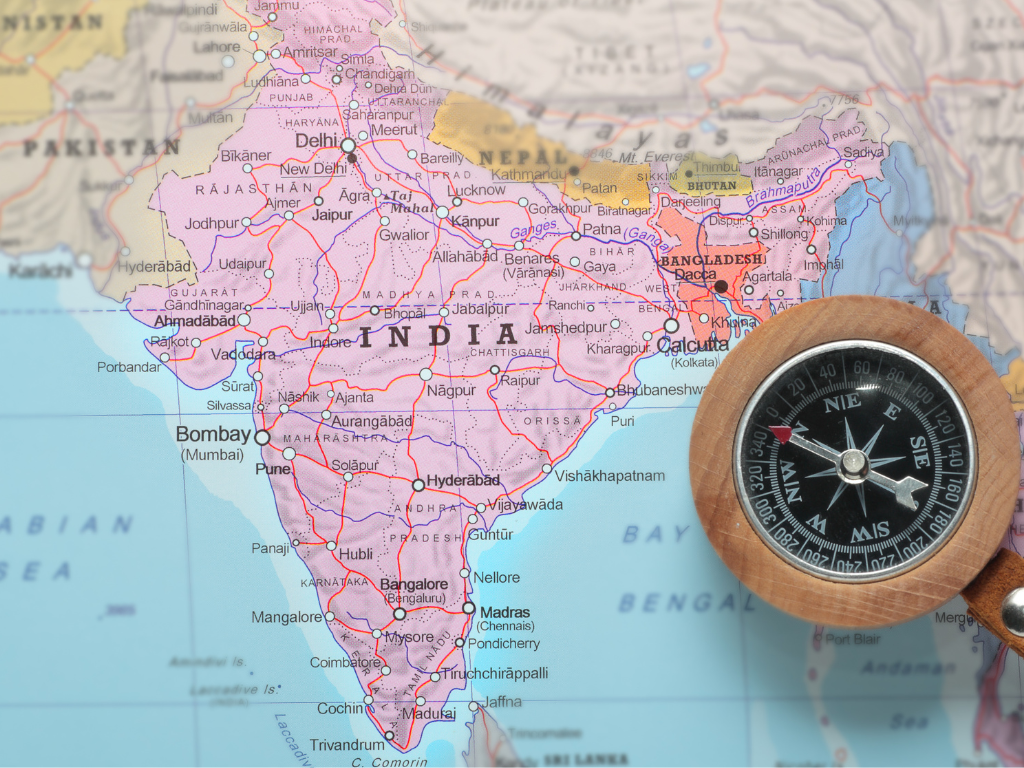
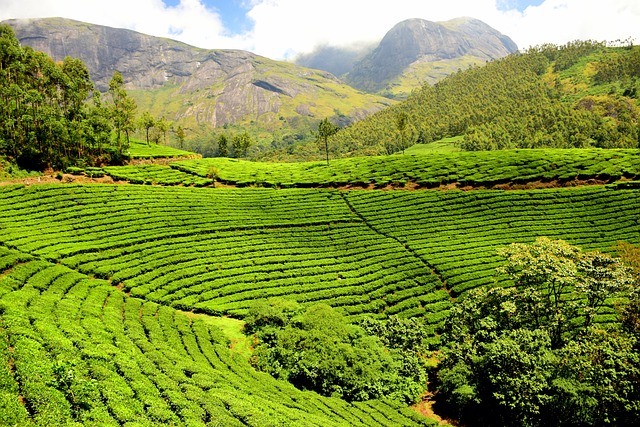
Hindus naturally respect all animal life and, whether for religious or tourist reasons, the preservation of animals is truly part of our habits. Demographic pressure being very strong, the creation of numerous animal parks and sanctuaries has become obvious in India to organize responsible tourism.
We are supporting
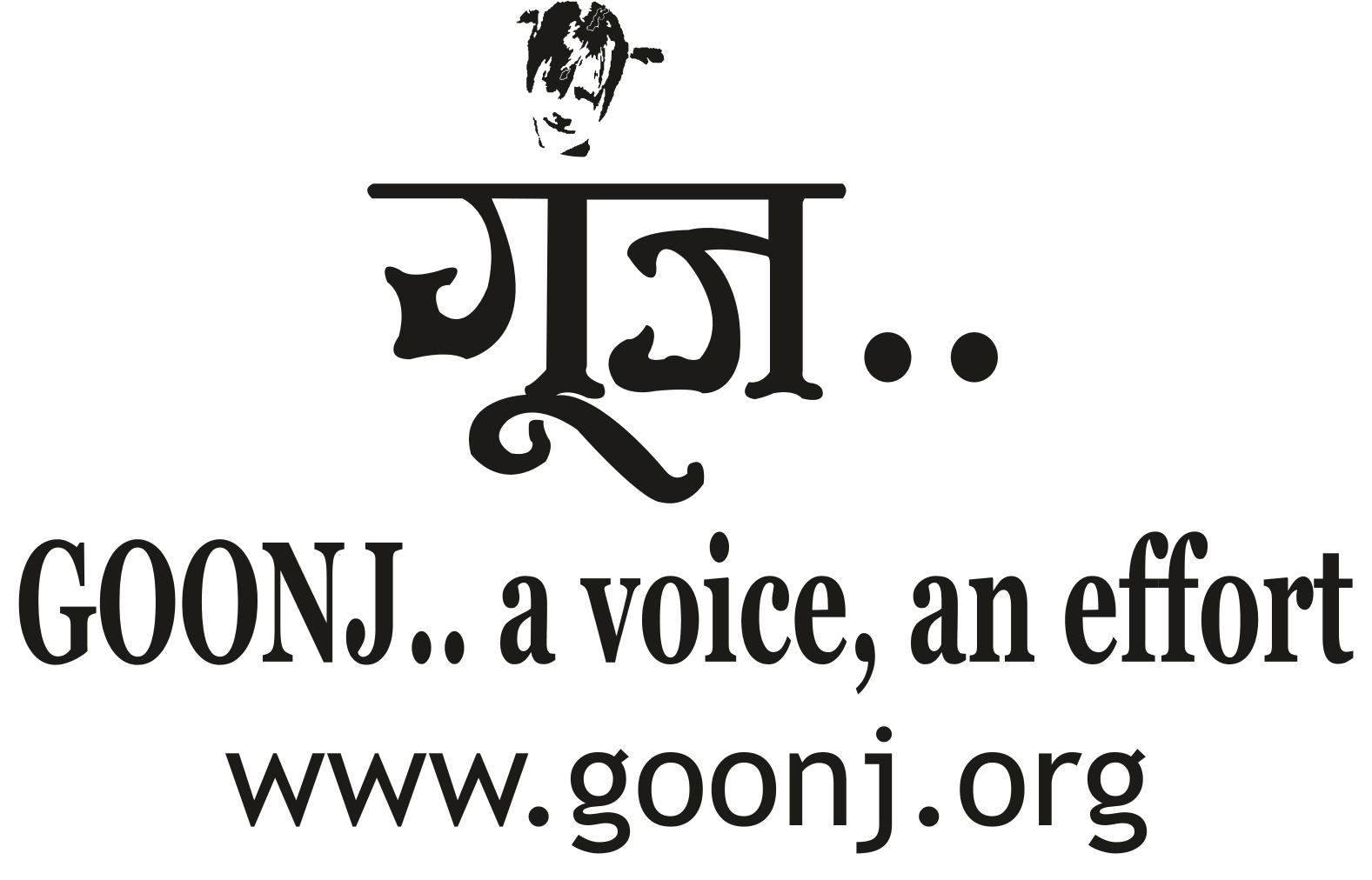
Towards sustainable agriculture with community agriculture.
The first settlements of modern humans in India are estimated at dates between 60 and 70,000 years ago. The oldest human traces found in South Asia date back around 30,000 years. At the beginning of the Holocene, South Asia was a continent of hunter-gatherers.
Around 7000 BC. AD, the first Neolithic settlement appears on the subcontinent at Mehrgarh and other sites in western Pakistan. During and after the Neolithic period, farmers dominate the land, especially the fertile river valleys.
During the IIe millennium before J.-C., tribes of pastoralists speaking an Indo-European language invade the subcontinent from the northwest. By settling in the Gangetic valley, they would assimilate the previous cultures.
It was during this period of Indian history that the canonical Hindu texts, such as the four Vedas, the Brahmanas, the Aranyakas and the Upanishads were composed in Vedic Sanskrit, a form of Sanskrit. The culture associated with this period, sometimes referred to as the Vedic civilization, developed in the north and northwest of the Indian subcontinent.
La première partie du Moyen Âge indien, entre 600 et 1200, se caractérise par des royaumes régionaux et une grande diversité culturelleAucun dirigeant de cette époque n’est capable de créer un empire et de contrôler des territoires au-delà du cœur de son royaume. Dans le même temps, les peuples pastoraux, dont les terres sont utilisées pour la croissante économie agricole, sont intégrés dans la société de castes, à la suite de quoi le système des castes commence à voir émerger des différences régionales.
At VIe and VIIe centuries, the first devotional hymns were created in Tamil. They are imitated throughout India and cause a resurgence of Hinduism and the development of modern languages of the subcontinent. During the VIIIe and IXe centuries, the Indian culture and political system spread to Southeast Asia, in what is now Thailand, Laos, Cambodia, Malaysia and Java.

After the Xe century, the Muslim nomadic clans of Central Asia, with their cavalry and their vast armies, penetrated regularly into the plains of the North-West, which resulted in 1206 in the creation of the Sultanate of Delhi. The Sultanate succeeded in controlling the majority of northern India and in penetrating into the South. This invasion is initially disturbing for the local elites, however the Sultanate accommodates its majority non-Muslim population and preserves its laws and traditions. By repelling the Mongol raids in the XIIIe century, the Sultanate protects India from the known devastations in western and central Asia. For centuries, soldiers, scholars, mystics, traders, artists and artisans from these regions found refuge in the subcontinent, contributing to the emergence of a syncretic Indo-Islamic culture in the north. The weakening of the southern kingdoms by the Sultanate allows the emergence of the Vijayanagara Empire. Adopting a strong Saiva tradition and learning from the military traditions of the Sultanate, the empire came to control the majority of peninsular India and strongly influenced the culture of southern India.
At the beginning of the XVIe century, North India fell to a new generation of warriors from Central Asia. The resulting Mughal Empire did not suppress local society but, on the contrary, balanced and pacified it through new administrative practices and the emergence of a new elite. This does not prevent the Mughal Empire from looting sacred places of Buddhism and imposing Islam in certain regions. Trade with the West developed via Antwerp, the world's leading financial center, which sent precious metals from America to India.
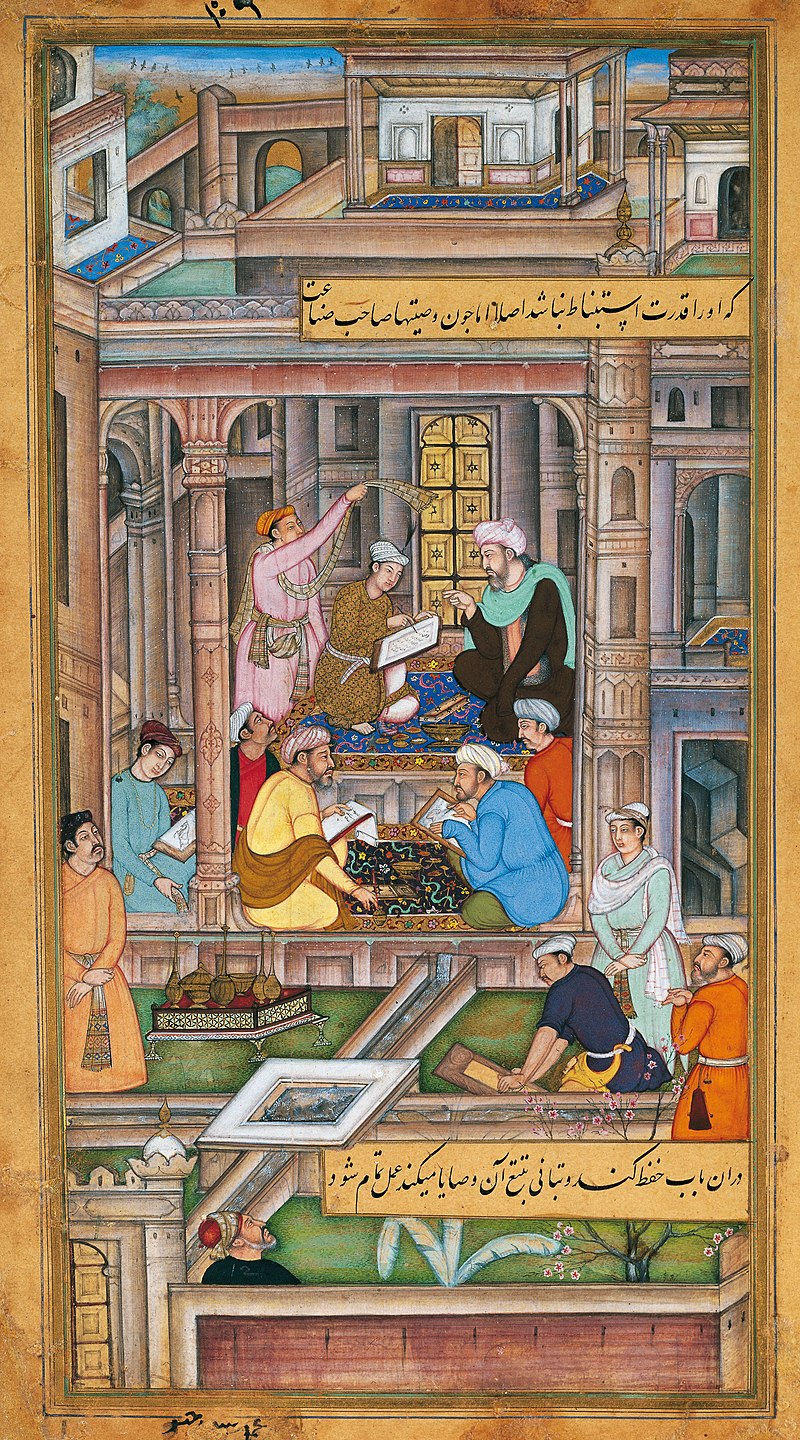
Through tribal ties and Islamic identity, especially under Akbar, the Mughals unified their state through loyalty, expressed through a Persian culture, to an emperor of near divine status.
The relative peace maintained by the empire for most of the XVIIe century is a factor of economic expansion for India and sees the emergence of new forms of painting, literature, textiles and architecture. Coherent social groups then emerged in northern and western India, such as the Marathas, Rajputs and Sikhs.
At the beginning of the XVIIIe century, European trading companies, notably the British East India Company, set up trading posts on the coasts.
During the 1820s, the Company relied on the riches of Bengal to increase the power of its army and annexed or dominated most of India. This domination marks the beginning of the colonial period: India ceases to export manufactured goods and becomes a supplier of raw materials for the British Empire.
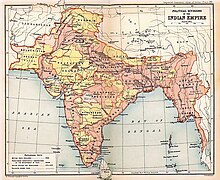
However, discontent with the Company grew during this period and culminated in the Indian Rebellion of 1857. Fueled by various resentments, including social reforms by the British, harsh land taxes and summary treatment of landlords and princes, the rebellion ran through many parts of northern and central India and threatens the dominance of the Company. Put down in 1858, the rebellion led to the dissolution of the Company and the direct administration of India by the British crown.
In the decades that followed, a public life began to emerge and, in 1885, the Indian National Congress was created.Between the 1870s and 1890s, nearly thirty million Indians died of successive famines. The degree of responsibility of the British colonial administration is subject to controversy among historians,
After the First World War, in which one million Indians served, a new period began, marked by reforms by the British but also by repressive legislation and repeated calls for self-determination and the beginnings of the non-violent movement of no - cooperation including Mahatma Gandhi becomes the leader and the symbol.

The independence movement culminates in . But the country suffered a bloody partition and the subcontinent was divided into two states: India and Pakistan.
The constitution of India came into force in 1950, making the country a federal and democratic parliamentary republic.. Since then, India has remained a democracy, the most populous in the world: civil liberties are protected and the press is largely independent. The economic liberalization that began in the 1990s allowed the creation of a large urban middle class and made India one of the countries with the highest growth rate in the world.
However, India is still affected by significant urban and rural poverty, by religious or caste conflicts and violence, by the rebellions of the Naxalites and separatists in Jammu and Kashmir.
Conflicts still oppose India with China and Pakistan over borders. These conflicts culminated in the Sino-Indian war of 1962 and three Indo-Pakistani wars in 1947, 1965 and 1971.
The languages in india are very diverse. The latest census counted 270 native languages in the country, including 122 major languages. The Indian Constitution recognizes 22 official languages. 77% of Indians speak an Indo-Aryan language (including the most widely spoken in the country, Hindi, is the mother tongue of 422 million Indians, or 41% of the population), 20% a Dravidian language. The other families represented are the Austroasiatic, Sino-Tibetan and Tai-Kadai languages as well as a few others.
English, the language of the British colonizer, is spoken as a first or second language by 12% of the population.
The official language of the central government is Hindi. English is the second official language.
In addition, twenty-two official languages are listed in the Eighth Schedule of the Constitution.
The religions in India are characterized by a diversity of practices and faiths. The country is the birthplace of Hinduism, Buddhism, Jainism and Sikhism and has long been home to Judaism, Christianity, Islam and Zoroastrianism.
According to the latest census, Hinduism is the most practiced religion: it has more than 966 million followers, or 79.9% of the population. India has 172.2 million Muslims, or 14.2% of its population, making it the third-largest country by number of practicing Muslims in the world after Indonesia and Pakistan. Christians, some of whom are among the oldest Christian communities in the world (Saint Thomas Christians), number 27.8 million (2.3% of the population). Sikhs, the majority of whom live in Punjab, number 20.8 million (1.7% of the population). Buddhists are 8.4 million (0.7% of the population) and Jains 4.4 million (0.4%).
Painting
The three Indian religions, Buddhism, Hinduism and Jainism have their own school of painting to support their religious traditions.
Mandala painting (from Ist century after J.-C.) is used to evoke the gods and for meditation.
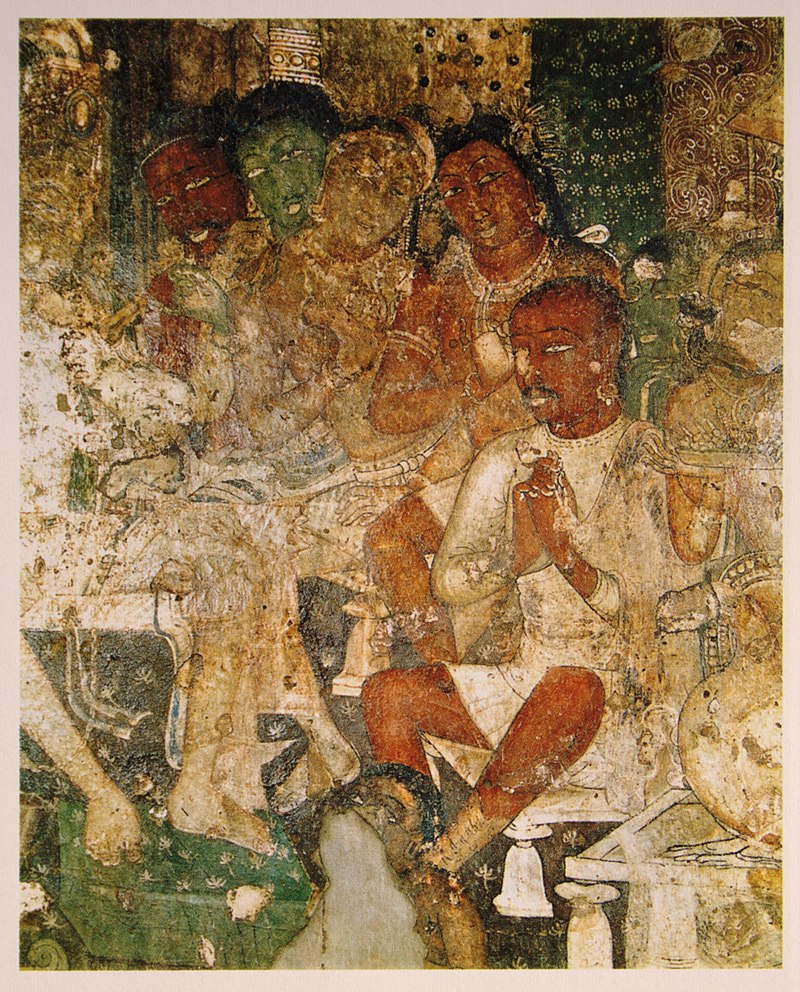
La peinture préhistorique comme les peintures rupestres trouvées à Bhimbetka qui datent pour certaines de – 30 000 ans.
Body paint was used at the dawn of humanity to impress the enemy as war paint or as a sign of recognition within a tribe. This primitive technique was also used as camouflage for hunting or simply as an ornament.
Scroll painting (from Ve century after J.-C.), with the most famous school of Patta Chitra, comes in the form of sheets of paper sewn together and sometimes glued to a canvas. Their width varies from 10 to 35 cm, and their length is rarely less than 1 m and can exceed 5 m.

The wall painting (from IIe century) is in the form of large works executed on walls, as in the caves of Ajanta or and the temple of Kailashnath.
Miniature painting (from Xe century) is executed on a very small scale for books or albums on perishable materials such as paper and cloth.
century) is executed on a very small scale for books or albums on perishable materials such as paper and cloth. Rajasthan.
Bengal and Calcutta has had a major role in the development of modern and contemporary art in India, with art schools and movements like the "Kalighat", "Bengal School", " Santiniketan", "Calcutta Group", "Society of Contemporary Artists" and "Calcutta Painters' Group".
Contemporary metropolitan painting has undergone many changes through advances in economy, art forms and styles.
Body painting
The colors used for the Holi celebration each have a special meaning: green represents harmony, orange optimism, blue vitality and red joy and love.

Contemporary vernacular painting is anchored outside of large metropolises. There are traditions of painting among several tribes, the tribal schools. Some are very old. Their artists, who are normally animists, depict tribal traditions and embodied gods in nature and everyday life. The other rural schools have their basis rather in rural and regional traditions.
Music
Since the earliest times, music in India has always had a double vocation: one intended for the temple and the gods, the other reserved for entertainment and the demons. This dichotomy radically separated instruments and musicians, even creating specific castes.
Selon la mythologie indienne, la musique a une origine divine : c’est par le son que le dieu Brahmâ a créé l’univers. Le dieu Shiva jouait quant à lui du tambour damaru, and his son Ganesh played him, like Hanuman by the way, the mridang drum. The goddess Sarasvati is always associated with the vînâ. The universe was created by primordial sound Ôm ; the language derives from the sounds of the drum.
In the South, Carnatic music developed, distinguishing itself from temple music and becoming increasingly integrated with bharata natyam dance. very quickly, the musicians play and improvise together, according to mathematical formulas.

In the North, Hindustani music developed under the influence of Islam and the Mughals, bringing with them the Arab-Persian world. The principal musician begins any concert with a long solo introduction (âlâp). It is only later that the percussion joins him (gat), punctuating the music with improvised or pre-established phrases. Here too, the music was integrated into the Kathak dance.
The classical music of India relies heavily on improvisation, in the sense that it is not played from a score. However, there are very strict rules on how to improvise, and many musicians memorize entire passages of such and such melodies or mathematical structures, in order to be able to use them purposefully.
Indian music is not orchestral, but essentially soloist.
Dance
The dance in india knows many styles, usually considered classical or folk. Like other aspects of Indian culture, the different dance forms originate from different parts of India, developed according to local traditions and also drawn from elements from other parts of the country.
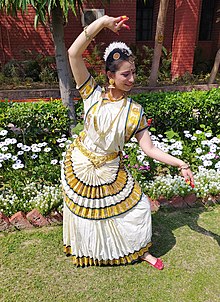
From the beginning, Indian dance has been essentially a religious, propitiatory act. According to tradition, the dance was invented by the god Shiva and his consort Parvati. Shiva himself is depicted as the dancing king who invented the tandavam, a cosmic dance prototype of male dances. Parvati invented the lasya, a dance that symbolizes the emotions of love, a model for voluptuous feminine dances.
Literature
The indian literature is rich in its very old corpus of tales and epics, and modern and contemporary literature, with great linguistic diversity.

Literature in Prakrit: the most famous is the Pali in which many works have been written such as philosophical or religious writings, especially Buddhist, poetry or grammar treatises.
Literature in Classical Tamil: Tamil is considered (after Sanskrit) the second classical language of India. The golden age of this literature, and especially poetry, is probably between the Ist century and the IVe century.
Thee literature in Hindi is abundant from the XIe century, although the language is still only a dialect. You have to wait for the XVecentury for the language to be fixed, in particular by the works of the philosophers Kabir or Râmânanda.
Theater
The indian theater traditional is entirely codified and symbolic, and intimately linked to dance and music. Indian dramatic art seeks to lead the viewer to a state of serenity and aesthetic enjoyment.

The dialogues between the characters sometimes combine parts in prose, sometimes parts in verse. The traditional sources of inspiration are found in mythology and religion. The Mahābhārata and the Rāmāyaṇa, for example, constitute a reservoir of often staged episodes.
or harappan civilization, named after the ancient city of Harappa, is a Bronze Age civilization whose territory extended around the valley of the Indus River, in the west of the Indian subcontinent (modern Pakistan and its surroundings) . Its so-called "mature" period is about 2600 before J.-C. to 1900 before J.-C., but more broadly its successive phases go at least from the end of the IVe millennium before J.-C. at the beginning of IIe millennium av. J.-C .
![Barque en terre cuite en forme de taureau, et figurines féminines. Période de Kot Diji (v. 2800-2600 av. J.-C.). Collection privée[132].](https://upload.wikimedia.org/wikipedia/commons/thumb/6/60/Valle_dell%27indo%2C_barca_a_forma_di_toro%2C_periodo_kot-dijan%2C_2800-2600_ac_ca._%28coll._priv.%29_02.jpg/1920px-Valle_dell%27indo%2C_barca_a_forma_di_toro%2C_periodo_kot-dijan%2C_2800-2600_ac_ca._%28coll._priv.%29_02.jpg)
This civilization develops from a Neolithic center located west of the Indus, in Balochistan, in the VIIe millennium before J.-C.. The Indus Valley begins to be populated by groups of sedentary farmers and herders around 4000 BC. Then begins the ancient Harappan period, or era of regionalization, during which the Indus Valley and neighboring regions are shared between several cultural horizons. It is from the culture of Kot Diji, towards the end of the IVe millennium before J.-C. and the first centuries of IIIe millennium before J.-C., that the Indus civilization itself is set up, which emerges by integrating the different neighboring cultures.

In its mature phase, from 2600 to 1900 BC. approximately, it covers a territory much larger than the contemporary civilizations of Mesopotamia and Egypt, which extends into the Indus plain, part of Balochistan, the Ghaggar-Hakra network, the region of interfluve between the networks of the Indus and the Ganges, and in Gujarat. It is an urban civilization, dominated by several large centers (Mohenjo-daro, Harappa, Dholavira, Ganweriwala, Rakhigarhi) with planned urbanism. They generally include a citadel which undoubtedly serves as a framework for a political power whose exact nature remains poorly known.

Indian gastronomy stands out with its spicy and spicy notes. The first days in India are often quite difficult for our palets unaccustomed to this type of cuisine, but the taste buds eventually get used to it quickly. India excels in vegetable dishes, a paradise for vegetarians! for example red lentil dal, palak paneer or curries with coconut milk.
Some emblematic dishes:
Thali
A thali est un repas indien et népalais dont la composition diffère d’une région à l’autre. Il s’agit d’un assortiment de plats (de l’entrée au dessert) servis généralement dans de petits récipients en métal disposés sur un plateau rond, également en métal. Le prix en est généralement modeste et les plats nourrissants.
In southern India, the tray is replaced by a banana leaf on which the dishes are placed directly. In North India, people sometimes use thali plastic disposables. As the Indian tradition does not use cutlery, we eat with the right hand.
There are thali végétariens ou non végétariens. Les deux proposent généralement du riz et/ou du pain, différent selon la région (naans, chapatis, paratha, puri...), chutney, dal (lentils), vegetables, meat or fish (for thali non-vegetarians) and a dessert, usually milk-based and often quite sweet.

 The Golden Temple is the informal name of the Harmandir Sahib meaning "Illustrious Temple of God", the holiest building of the Sikhs, located in the heart of the city of Amritsar, Punjab. The name "Golden Temple" is due to its golden cover.
The Golden Temple is the informal name of the Harmandir Sahib meaning "Illustrious Temple of God", the holiest building of the Sikhs, located in the heart of the city of Amritsar, Punjab. The name "Golden Temple" is due to its golden cover.
It sits enthroned in the center of a "sacred pool", theAmrit Sarovar (or "Nectar Pool"), which, like a lake, draws all the waters to itself as the temple draws all the disciples. The basin was dug during the last quarter of the XVIe century at the time of the foundation of the city to which it gave its name.
The temple is surrounded by a vast complex including places of Sikh worship with the emblematic "Throne of the Immortal", dining halls where free meals are offered to pilgrims, a museum, etc.
After taking a promenade made of white marble, the visitor or pilgrim enters the heart of the temple through a 60-meter-long marble bridge.
The temple is a majestic three-storey pavilion, the upper parts of which have been covered with plates and gold leaf in the XIXe century by order of Maharaja Ranjit Singh. The building was built in marble of different colors, inlaid with mother-of-pearl and semi-precious stones.
The Golden Temple contains the sacred book of the Sikhs, the Guru Granth Sahib, itself locked in a richly decorated chest.
 Mysore Palace is a historic palace and royal residence: It is the official residence of the Wodeyar Dynasty and the seat of the Kingdom of Mysore.
Mysore Palace is a historic palace and royal residence: It is the official residence of the Wodeyar Dynasty and the seat of the Kingdom of Mysore.
The architectural style of the domes of the palace is a blend of Indian, Islamic, Mughal and Neo-Gothic architectural styles.
The previous palace, "wooden palace", was burnt down during the Dusara festivities of 1896. The construction of the new palace was completed in 1912.
There are many remarkable rooms including: the throne room, the room of private audiences, the pavilion of dolls, the marriage room.
 A French colony until 1954, it was the capital of French India. Its intense port activity is linked to its cotton weaving activity.
A French colony until 1954, it was the capital of French India. Its intense port activity is linked to its cotton weaving activity.
Its French past can be seen in the French Quarter with its tree-lined streets, mustard-colored colonial villas and high-end boutiques. A waterfront promenade runs along the Bay of Bengal past several statues including a 4m high Gandhi memorial.

It is the largest lake in Asia,the Chilika Lake area and the lake are very beautiful, it is a protected area, To get off the beaten track. The place is authentic: peasants and fishermen mingle on its banks. A boat trip with a guide is essential: depending on the season you can see exotic birds, and even dolphins, and nearby a place where the Olive Ridley turtles come to lay their eggs every year.

This park is the oldest of the national parks of India. It is located near the city of Nainital in the state of Uttarakhand. The park is known for its varied wildlife, as well as being the launch site for the Project Tiger. Corbett National Park and Sonanadi Sanctuary neighbor form the Corbett Tiger Reserve: in honor of Jim Corbett, a famous hunter turned wildlife protector, who became best known for his hunts for tigers and man-eating leopards in the Kumaon and Garhwal regions in the 1920s, and for the accounts which he made thereafter of his adventures, in a series of works like The Kumaon Man Eaters and The man-eating leopard of Rudraprayag, which became big hits around the world.
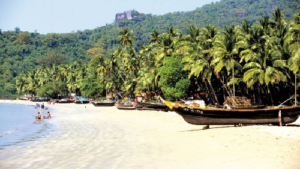
Goa is a state in western India whose coastline stretches along the Arabian Sea. Traces of its past as a Portuguese colony are still visible in the 17th century churches and in the spice plantations of the tropical zone.
Goa is famous for its beaches, ranging from the popular towns of Baga and Palolem to lesser-known fishing villages such as Agonda. In Panaji, the capital, the winding streets of the Latin Quarter are full of art galleries, cafes and Portuguese colonial houses. Special mention for the famous Anjuna Flea Market and Evening Bazaar held at Mackie during the summer. On the coast, the Salim Ali bird sanctuary offers an exceptional view of the mangrove ecosystem. Walk around Goa through small villages, jungle paths and admire the many waterfalls.
 Ajantâ is a village in the Indian state of Maharashtra, near Aurangabad, famous for its group of 29 artificial Buddhist caves, carved into hard basalt, three of which are unfinished; remarkable paintings and sculptures decorate them.
Ajantâ is a village in the Indian state of Maharashtra, near Aurangabad, famous for its group of 29 artificial Buddhist caves, carved into hard basalt, three of which are unfinished; remarkable paintings and sculptures decorate them.
They fall into two categories, the first served as a refuge for the monks during the rainy season, and the following served more as meeting and prayer rooms.
The richness of color, flexibility of form and spiritual warmth of Ajanta's murals are part of a tradition that has influenced temple art across India and Southeast Asia throughout over the next millennium.
 Delhi has been the capital of several Indian empires. In the early 1900s, the proposal was made to transfer the administration of the British Indian Empire from Calcutta, considered too remote, to Delhi.
Delhi has been the capital of several Indian empires. In the early 1900s, the proposal was made to transfer the administration of the British Indian Empire from Calcutta, considered too remote, to Delhi.
The architecture of New Delhi is thus a mixture of British and indigenous styles, as illustrated by the use of beige and pink sandstone for the many official buildings and the construction of Mughal-inspired gardens. For Jack Cardiff, the new city had to be “neither Saracen nor British but resolutely Indian, retaining the motifs of the old city, but dignifying them with a new austerity. »
To do :

The Taj Mahal means “the crown of the palace” — is located in Agra, on the banks of the Yamuna River.
It is a white marble mausoleum built by the Muslim Mughal Emperor Shah Jahan in memory of his wife known as Mumtaz Mahal, which means "light of the palace".
This one dies on giving birth to their fourteenth child, while accompanying her husband during a military campaign. The construction of the mausoleum was completed for the most part in 1648. Her husband, who died on , is buried with her.
The Taj Mahal is considered a jewel of Mughal architecture, a style that combines architectural elements from Islamic, Iranian, Ottoman and Indian architecture.
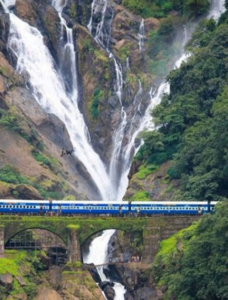 Dudhsagar is one of the most extraordinary waterfalls in the world located on the Mandovi river on the border of Goa and Karnataka. It is one of the highest waterfalls in India and is spectacular during the monsoon season. You can see the Amaravati express crossing the waterfalls thinking of the Indians who built a railway in this area!
Dudhsagar is one of the most extraordinary waterfalls in the world located on the Mandovi river on the border of Goa and Karnataka. It is one of the highest waterfalls in India and is spectacular during the monsoon season. You can see the Amaravati express crossing the waterfalls thinking of the Indians who built a railway in this area!

The Ganges is considered sacred by Hindus: immersion in the Ganges frees the believer from his sins and spreading ashes in the river can bring a better future and even achieve the moksha or deliverance, that is to say the exit from the phenomenal world. For Hindus, the water of the Ganges has the virtue of purifying the body of humans and freeing the soul of the deceased.
The story goes that he was a king who sought prosperity for the land, implored the goddess Ganga. King Bhagiratha was answered but the goddess believed that the waves of the Ganges would submerge the earth, which is why she put them in the headdress of a god: Shiva. The latter then freed the river from his hair.
When a pilgrim bathes in the Ganges, it is the symbol of the search for union with the ultimate truth. The Ganges is taken as a river bringing spiritual wisdom.
Hindu devotees make pilgrimages to bathe in its waters and practice meditation on its banks. Several Hindu sacred sites are found along the banks of the Ganges, such as Haridwar and Benares.
 Nicknamed the magnificent fort, it overlooks the city from the top of its 122 meters. Inside it are several richly decorated palaces with many courtyards.
Nicknamed the magnificent fort, it overlooks the city from the top of its 122 meters. Inside it are several richly decorated palaces with many courtyards.
The strategic position of the fort allowed the guards to have a better observation post in case the city could be attacked. It took more than ten years to build the building. More than 10,000 workers were requisitioned for its construction, as well as 500 elephants for the transport of materials. The architects used volcanic rocks from the surrounding desert: this is what gives the characteristic red color of the fort.
The fort has four rows of ramparts, the height of which can reach up to 36 meters. They are over 9.5 kilometers long. Each rampart has a dozen observation towers. In addition, it is necessary to cross seven gates to enter the enclosure. This fort is reputed to be impregnable.

The Ladakh is a region of Tibetan culture that forms a Union Territory of India.
Also called the Little Tibet, Ladakh's main religions are Tibetan Buddhism for 40% of the population and Islam for 46% of the population. Its most important city is Leh.
The surroundings of Ladakh are dominated by irregular and arid mountains. Historically, the area is an ancient Buddhist kingdom, which is still today filled with picturesque Tibetan Buddhist monasteries called gompas; and colorful prayer flags containing spiritual messages.
Leh is one of the main tourist cities of Ladakh. it is often chosen as a base to explore Ladakh. Leh is nestled at 3500 meters above sea level, so it takes a few days to acclimatize to its altitude.
 Themonumental complex of Hampi is a UNESCO World Heritage Site, it was the center of the eponymous capital of the Hindu Vijayanagara Empire during the XIVe century. The chronicles left by Persian and European travellers, and in particular by the Portuguese, speak of a large and prosperous city. In 1500, Hampi-Vijayanagara was the second largest city in medieval times after Beijing, and probably the wealthiest in India at that time, attracting Persian and Portuguese traders.
Themonumental complex of Hampi is a UNESCO World Heritage Site, it was the center of the eponymous capital of the Hindu Vijayanagara Empire during the XIVe century. The chronicles left by Persian and European travellers, and in particular by the Portuguese, speak of a large and prosperous city. In 1500, Hampi-Vijayanagara was the second largest city in medieval times after Beijing, and probably the wealthiest in India at that time, attracting Persian and Portuguese traders.
Located in Karnataka near the modern town of Hospet, the ruins of Hampi span 4 100 ha comprising more than 1,600 remains of the last great Hindu kingdom of southern India, which includes "forts, riverbanks, royal and sacred complexes, temples, shrines, halls, mandapas, memorial structures, hydraulic works and others ". Hampi continues to be an important religious center housing the temple of Virupaksha, an active monastery linked to Adi Shankara and various monuments belonging to the old city.
The Backwaters of Kerala, area series of lagoons and brackish water lakes, typical landscape of the state of Kerala in southern India.
The network, made up of some 1,500 kilometers of canals, both natural and artificial, includes several large lakes, including Ashtamudi and Vembanad. Stretching almost the entire length of the Kerala coast, it is fed by around 40 coastal rivers descending from the Western Ghats. The lagoons were formed by the action of waves and coastal currents creating a barrier of low islands at the mouths of coastal rivers.
The port of Kochi - the ancient Cochin - is located at the outlet of Lake Vembanad with the Laccadives Sea.
Connected by canals dug by the hand of man, the lagoons form a network of transport of goods widely used by the local economy. The Backwaters are also an important tourist attraction in Kerala. You can go there by canoe or kettuvalom, old rice barges transformed into a “hotel boat” with one or two cabins.

The Thar Desert extends over more than 200,000 km² in western India in the state of Rajasthan. This great Indian desert is a great place to go for camel rides. Along the way, you will pass by charming little villages where you can meet their inhabitants. All the charm of this desert is based on its desert landscapes as far as the eye can see, absolute calm and authentic encounters.

Tawang Monastery in Arunachal Pradesh is the largest monastery in India. It was founded by Merak Lama Lodre Gyatso in 1680-1681, in accordance with the wishes of the 5th Dalai Lama.
The monastery is located very close to the Tibetan border, in the Tawang-chu valley which descends from Tibet.
The monastery is three stories high. It is surrounded by a 610 m long wall. In the complex there are 65 residential buildings. The monastery is also known in Tibetan as the Galden Namgey Lhatse, "heavenly paradise in a clear night". The library of the monastery has valuable ancient scriptures, mainly Kanjur and Tanjur.

Bandipur National Park was the hunting ground of the Maharajas of Mysore.
It belongs to a larger nature reserve that spans the states of Tamil Nadu (Mudumalai Park) and Kerala.
The park is home to a few tigers, but you have to be patient to see them. You can still make do with antelopes, monkeys and warthogs.
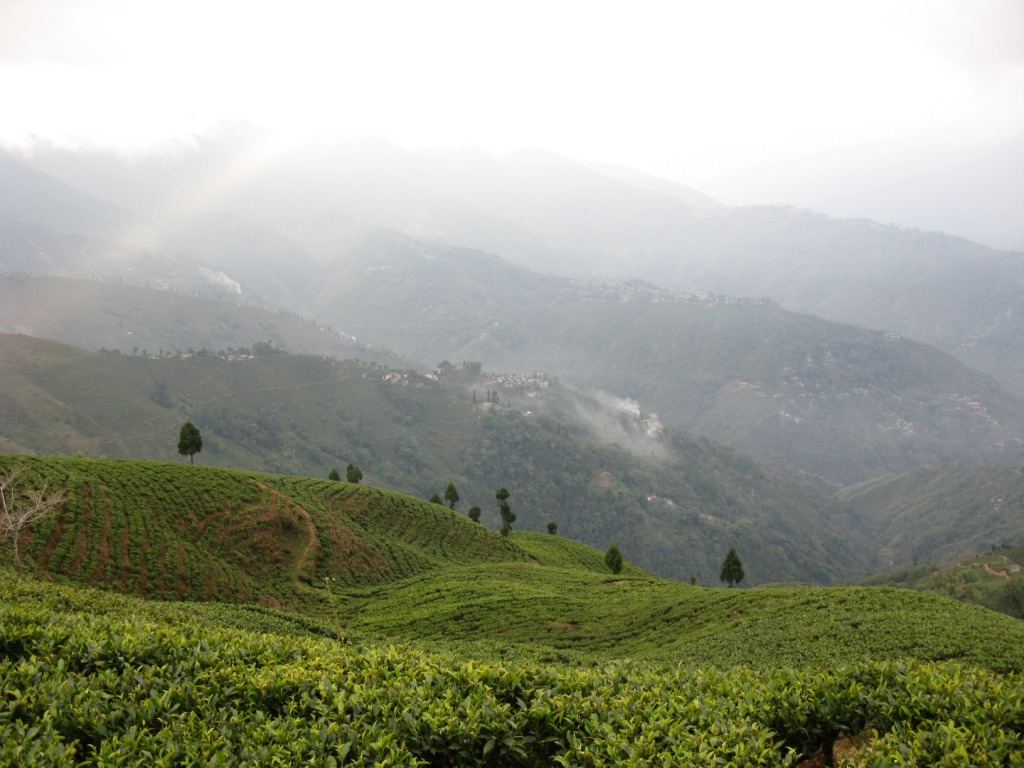
Darjeeling is a city in the Indian state of West Bengal, located in the foothills of the Himalayas, evolving between 2,000 and 3,000 meters above sea level.
The region is particularly known for its tea. Darjeeling tea has been around since the XIXe century one of the most popular black teas, especially in Great Britain and countries that were part of the British Empire.
In principle, the city of Darjeeling can be reached by the Darjeeling Himalayan Railway (nicknamed the Toy Train, from New Jalpaiguri, but the service is extremely irregular as the track is often washed away by landslides, especially during the monsoon. The trip, very picturesque, lasts from 5 to 6 hours for a distance of 80 kilometers.
The 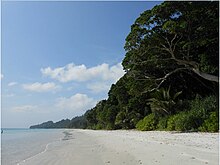 Andaman and Nicobar Islands are still quite unknown but they are becoming more and more touristic. Indeed, they attract for their immense beaches (on the island of Havelock, the “Beach Number 7" or "Radha Nagar Beachwas voted Asia's most beautiful beach by Time Magazine), their pristine islands and opportunities for adventure sports like scuba diving.
Andaman and Nicobar Islands are still quite unknown but they are becoming more and more touristic. Indeed, they attract for their immense beaches (on the island of Havelock, the “Beach Number 7" or "Radha Nagar Beachwas voted Asia's most beautiful beach by Time Magazine), their pristine islands and opportunities for adventure sports like scuba diving.
The capital of the archipelago Port Blair has places to visit such as the old prison and its cells, the Mahatma Gandhi marine national park, the Andaman aquatic complex, the Chatham sawmill, the forest museum or the naval museum .
 It is one of the most popular national parks in India. The park takes its name from Bandhavgarh from the most prominent mound in the area, which is said to have been entrusted by the god Rāma to his younger brother Lakshmana to oversee Lanka the fortress island of the legendary demon king Ravana. The Bandhavgarh Fort is built on this hill.
It is one of the most popular national parks in India. The park takes its name from Bandhavgarh from the most prominent mound in the area, which is said to have been entrusted by the god Rāma to his younger brother Lakshmana to oversee Lanka the fortress island of the legendary demon king Ravana. The Bandhavgarh Fort is built on this hill.
This park has great biodiversity. The density of tiger population in Bandhavgarh is one of the highest in India and the park has a large breeding population of leopards, as well as various species of deer.
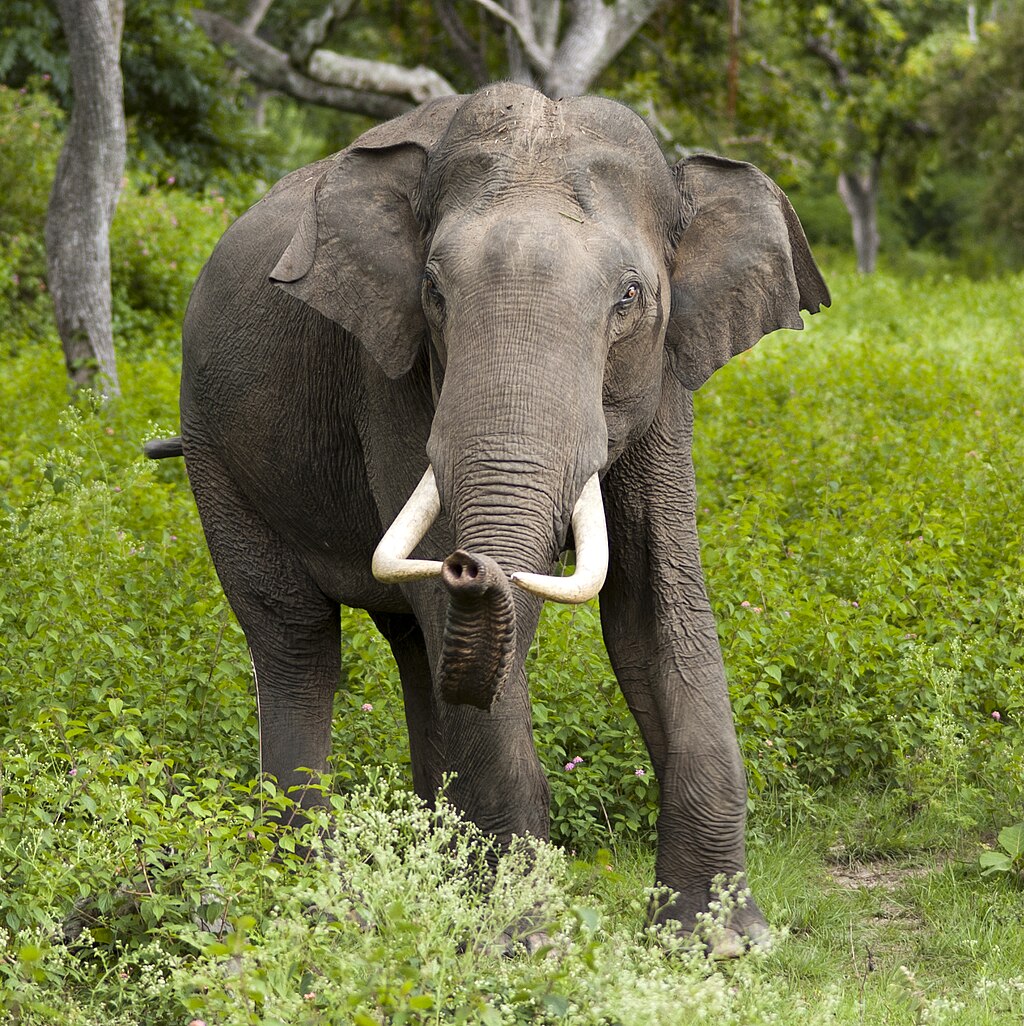 Bandipur National Park is located in the southern state of Karnataka in India. It is contiguous with Mudumalai National Park in the neighboring state of Tamil Nadu, Wynad Wildlife Sanctuary in Kerala, and Nagarhole National Park to the northwest. There are tigers in particular.
Bandipur National Park is located in the southern state of Karnataka in India. It is contiguous with Mudumalai National Park in the neighboring state of Tamil Nadu, Wynad Wildlife Sanctuary in Kerala, and Nagarhole National Park to the northwest. There are tigers in particular.
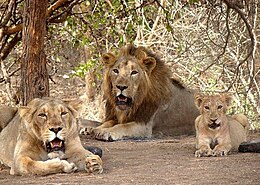 It is the only place in the world where you can still find Lions (Panthera leo) in the wild outside of Africa, making it an important area.
It is the only place in the world where you can still find Lions (Panthera leo) in the wild outside of Africa, making it an important area.
More than 2,375 distinct animal species including about 38 species of mammals, about 300 species of birds, 37 species of reptiles and more than 2,000 species of insects have been listed. Carnivorous mammals mainly consist of Asiatic lion, leopards, Chaus, hyenas, jackals, Bengal fox, Mongoose. the Rusty Cat can be seen there, but is rare.
The main herbivores of Gir are the Axis deer, the Nilgai antelope, Sambar, the tetracerus antelope, the Arabian gazelle and the wild boar. The Antelope cervicapra of the region are sometimes seen in the sanctuary.
 This park is the oldest of the national parks of India. It is located near the city of Nainital in the state of Uttarakhand. The park is known for its varied wildlife, as well as being the launch site for the Project Tiger. Corbett National Park and the nearby Sonanadi Sanctuary form the Corbett Tiger Reserve. Wildlife in Corbett National Park include tiger, Asian elephant, chital, sambar, Nilgai antelope, gharial, king cobra, muntjac, wild boar, hedgehog, flying fox, the Indian pangolin, and nearly 600 species of birds.
This park is the oldest of the national parks of India. It is located near the city of Nainital in the state of Uttarakhand. The park is known for its varied wildlife, as well as being the launch site for the Project Tiger. Corbett National Park and the nearby Sonanadi Sanctuary form the Corbett Tiger Reserve. Wildlife in Corbett National Park include tiger, Asian elephant, chital, sambar, Nilgai antelope, gharial, king cobra, muntjac, wild boar, hedgehog, flying fox, the Indian pangolin, and nearly 600 species of birds.
 The Kanha National Park, popularly known as "Kanha Tiger Reserve", is one of India's only tiger sanctuaries and the largest national park in Madhya Pradesh.
The Kanha National Park, popularly known as "Kanha Tiger Reserve", is one of India's only tiger sanctuaries and the largest national park in Madhya Pradesh.
Kanha has been ranked in the top 10 must-visit places for tourists. The park has a large population of Bengal tigers, Indian leopards, sloth bears, barasinghas and Indian wild dogs. The lush sal and bamboo forests, grassy meadows and ravines of Kanha inspired Rudyard Kipling for his famous novel The Jungle Book.
 Kaziranga is a vast expanse of tall reedbeds, elephant grass meadows, swamps and tropical semi-evergreen forest irrigated by four major rivers, including the Brahmaputra and its many backwaters. Kaziranga has been the subject of several books, documentaries and songs. The park celebrated its centenary in 2005, after its classification as Reserved forest in 1905.
Kaziranga is a vast expanse of tall reedbeds, elephant grass meadows, swamps and tropical semi-evergreen forest irrigated by four major rivers, including the Brahmaputra and its many backwaters. Kaziranga has been the subject of several books, documentaries and songs. The park celebrated its centenary in 2005, after its classification as Reserved forest in 1905.
This park has achieved more notable successes in wildlife conservation than most other protected areas in India.
 Nagarhole National Park, also known as Rajiv Gandhi National Park, is a wildlife sanctuary spanning 247 square miles in Kodagu district 89 kilometers south of Mysore in Karnataka. It is also one of the best maintained national parks in India.
Nagarhole National Park, also known as Rajiv Gandhi National Park, is a wildlife sanctuary spanning 247 square miles in Kodagu district 89 kilometers south of Mysore in Karnataka. It is also one of the best maintained national parks in India.
Crossed by the Kabini River, the park offers the spectacle of landscapes with delicate charms, in the early morning, with a beautiful bright light!
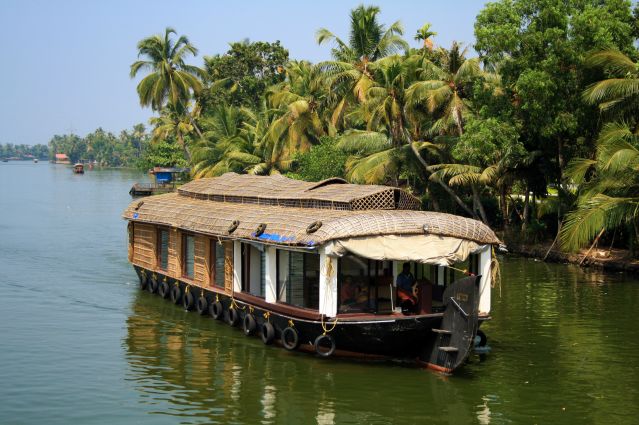
The Periyar National Park is a protected area located in the state of Kerala. The park, often called Thekkady, lies on the flank of the Western Ghats, bordering Tamil Nadu, in the districts of Idukki and Pathanamthitta. The protected area, whose central part of 350 km2 constitutes the park itself, is intended to protect the tigers, within the framework of the program Project Tiger.
The center of the park is occupied by Lake Periyar, a reservoir of 26 km2 formed by the waters of the Mullaperiyar Dam in 1895.
 Striped with waterways, it deploys a mosaic of natural environments: dense forests, rocky outcrops, vast expanses of grassland.
Striped with waterways, it deploys a mosaic of natural environments: dense forests, rocky outcrops, vast expanses of grassland.
The Fort of Ranthambore whose construction dates from the middle of the Xe century is an important place in the historical development of Rajasthan. It is famous in India for the glory and valor of the legendary King Hammiradeva (Hammir Dev Chauhan) of the Chahamana dynasty.
In particular, tigers are found in Ranthambore National Park. There are also hyenas, sloth bears, chitals, wild cats, crocodiles and more than 250 species of birds.
Here are some ideas for hikes in India:
https://everipedia.org/wiki/lang_en/Indiahikes
Indian Railways is one of the largest railway companies in the world, transporting 17 million passengers and 2 million tons of goods every day.
The big cities are equipped with metro (Mumbai Metro, Jaipur Metro) or tram network (Calcutta Tram).
The road is the main means of transport in India. The network density is 0.66 km of road per square kilometer, which puts it at the same level as the United States, and well above that of China.
Traffic accidents in India are a major source of death, injury and property damage!

Before the arrival of modern means of transport and the development of road and rail infrastructure, trips were made mainly on foot, then by bicycle, which are still today the most widespread means in urban areas.. Traditional means like the rickshaw are still used in most cities.
Find more updated information on Tourism in India in our Blog Tourismer.io

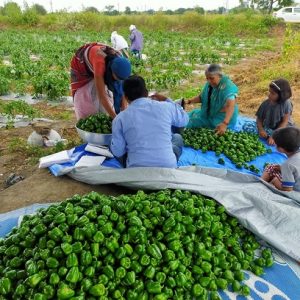
In an attempt to address issues associated with forced migration and create livelihood opportunities, Goonj, together with his partner organization, developed a sustainable and profitable model of community agriculture to help local communities in Beed (Maharashtra) under the Goonj's 'Vaapsi' (Livelihoods), an initiative to support around 160 people with seeds and farming equipment in addition to accompanying them in acquiring 15 acres of leasehold land and contributing to the first year's rent .
https://goonj.org/category/livelihood/